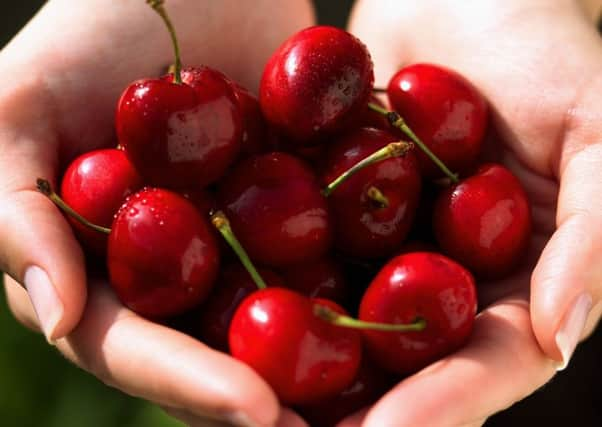Science helping to make cherries Scotland's next big crop


Limited cherry growing in Perthshire and Fife has proved successful with scientists at the James Hutton Institute in Dundee to support Scottish farmers in growing the crop on a bigger, commercial scale.
Dr Julie Graham , a cell and molecular science expert at the institute, has helped to lead development of Scotland’s blueberry crop and is now to apply the same principles to get cherries well established in Scottish soil.
Advertisement
Hide AdAdvertisement
Hide AdShe said: “We have been working on the blueberry for roughly 10 years as growers were really keen on them, chiefly because they are very healthy and they can grow for a long time, but they had very, very little information at the beginning.
“We set up a breeding programme and were able to access some innovation funds, which is what we will now look to do with cherries.”
A cherry working group will now be set up to share best practice and most up-to-date research on the crop.
Dr Graham said cherries would replace traditional raspberry growing in some cases given that farmers in Scotland had suffered the devastating effect of raspberry root rot, which had wiped out crops and destroyed soil health.
She said: “So the growers have all the infrastructure, they have all the know how and basically now they are trying to put in cherries.
Dr Graham said that Scotland did have successful cherry crops in the past but that now dwarf trees were being used to fit the crop into poltunnels.
She said that the long summer days in Scotland suited the crop very well and that the results were “fantastic.”
And crucially, it can allow crops to be ready during the early autumn period when the southern hemisphere cherries are yet to be harvested.
Advertisement
Hide AdAdvertisement
Hide Ad“The reason growers are so interested in cherries is that we can grow them in Scotland when there are no cherries anywhere else. The long days of summer really, really suits them.
“The taste is fantastic and you can get a really high quality product.”
It is estimated that soft fruit production in Scotland is worth £93m a year with the fertile lands of Perthshire, Fife, Angus and Aberdeenshire offering the richest pickings.
Innovation continues in farms across the country in a bid to expand growing seasons and access new markets at a time when growers face fresh pressure from the introduction of the living wage.
At Castleton Farm near Laurencekirk, Aberdeenshire, frost fighting technology, first trialed in wine producing vineyards is being used to protect blueberry crops being grown all-year round.
Crops are sprayed with water which turns to ice - with the latent heat involved in that process actually protecting the plant from frost during blossom.
It is technology that allows Scottish blueberries to be the only ones on sale during October and November in the world, albeit in small amounts at present.
Meanwhile, other growers are using biomass heaters to warm polytunnels and grow strawberries out of the traditional season.
Advertisement
Hide AdAdvertisement
Hide AdSo-called “novel crops” are also proving successful in some cases.
Peter Thomson, who farms near Blairgowrie, grows aronia - a berry said to have three times the antioxidant of blueberries - for Tesco.
Last week, it was announced that Scotland was on course to become a major producer of the honeyberry - a cross between a blueberry and a raspberry which is being hailed as a superfood - following a successful trial at P.A Arbuckle and Son at Lundie near Dundee which was assisted by soft food breeders at the James Hutton Institute.
Stewart Arbuckle, who planted the first honeyberry orchard at the family farm in 2014, said that he was certain soft fruit growers in Scotland would return to their greatest asset in time - the soil.
He said crops were now primarily grown in substrates, such as peat or a type of coconut husk bought in from Sri Lanka, to support growth.
He said: “Personally. I see the future as going back to the soil. In my mind we are just totally neglecting our best asset, which is soil which has degraded over the past 50 to 100 years. We are getting to the point where it is almost lifeless.
“We might end up with big factories in town centre where shelves of food are being grown under LED lights using hydroponics. There are couple of examples of this, such as lettuce factories in Chicago. But to be honest, I find that a bit creepy.”
